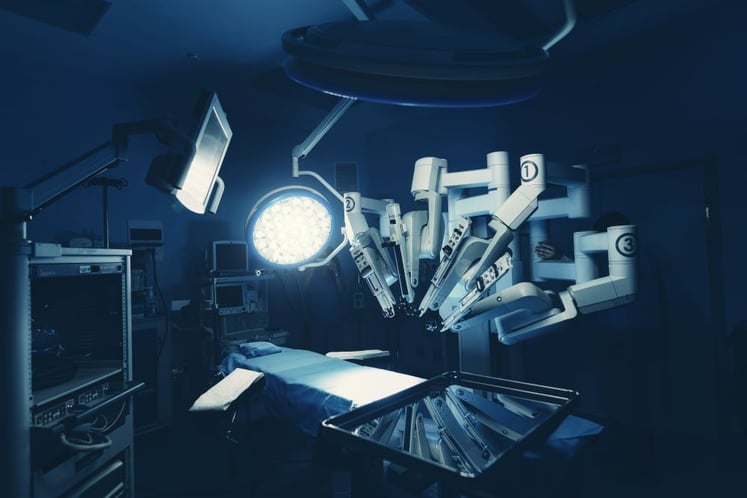
In a previous post we talked about the differences and applications of developer boards and industrial boards. We briefly discussed compatibility, product life, certifications, sizing, and security. In this blog post, we will deepen the topic to help you learn if you need to start sourcing industrial boards.
Hardware has become an essential component for state-of-the-art medical equipment. Connecting to the Internet, higher processing capabilities, automation, power consumption, and precision are some of the pressing priorities medical OEMs face today. It is impossible to fulfill these needs without specialized hardware components which were designed and manufactured to perfectly match the application requirements.
As we stated in the previous post, developer boards are perfect for prototyping or low production runs. However, once you are ready for mass production, you need a custom industrial board because those are better equipped to perform in the medical industry and will provide you with a better Return on Investment. Let’s look at some specific topics of how an industrial board fits medical applications:
Long Product Life
Most industrial boards (particularly the ones in which you own the design) will be produced for far longer than the standard boards. This protects your initial capital investment in design and in certifications. Technological projects go-to-market periods are marked in years. If you are not careful, by the time your product is ready for mass production, the standard board might have started its End of Life (EOL) period. Or by the time you are selling your systems you get notified that EOL is set, and you need to look for replacements while you hold Last Time Buy Inventory (and paying storing fees) to guarantee demand for a couple of years. In addition, the standard board life will impact repairs and guarantees which in turn can damage customer relationships. Finally, when you are ready to start working on the product next generation, you will be able to smoothly transition to the new system. With current market conditions and shortage of components, this is particularly important.
100% Compatibility
A custom board is designed to perfectly match your system. The board will work smoothly, and it will be a 100% compatible with the application. In terms of hardware, standard unnecessary features will be eliminated in the designing phase which reduces costs. Moreover, security features and protections will be added. Overall board size can be miniaturized to fit the space in the application. In terms of software, board design will match processing capabilities, operating system, firmware and will consider the software that must be run. 100% compatibility saves you money in redesigning and testing of standard solutions and will help you save time to go to market.
Certifications
Medical equipment must meet stringent safety standards and certifications. It must be safe to be used or installed around, near or in people. These certifications can be costly and cumbersome. Therefore, you must plan when there is a change that will require you to re-certify any piece or the whole equipment. Most standard boards are not manufactured or tested for medical applications. You will have to perform all testing and certifications with a custom, industrial board or a standard one. You are really saving nothing in terms of certifications by choosing a standard board. And, as stated above, standard board life tends to be shorter than custom, industrial boards.
24/7 operation
There are some medical applications in which equipment must operate 24/7 flawlessly because that is the difference between life or death. Industrial boards include robust components which are designed to withstand harsh operating conditions as humidity, dust, high temperatures and intensive operation. Some of these hardware components will even provide specific levels of protection and operation. Using industrial boards will protect your investment and will shield you against malfunctions. Even if the application is not life and death, due to Covid and the pandemic, some medical equipment might need to work intensively to keep up with the workload of testing and diagnosing, for example. Consequently, if you included a custom, industrial grade board, this unexpected high demand would not hinder operations and will allow the equipment to function even under those tough conditions.
Correct Sizing of Components
One common mistake while sourcing standard boards is oversizing components to make sure the equipment can handle the workload. As a result, you might introduce unnecessary costly features to your design. It is true that industrial hardware components can be more expensive than commercial/standard components. Nevertheless, if you correctly size components in a custom board design, you will save money in terms of redesigning, recertification, testing and some other hidden costs. Furthermore, you will be saving valuable space within the equipment.
Security
Some medical equipment is installed outside of restricted areas, and some can be accessed by many different medical professionals. How do you avoid costly intrusions and potentially harmful attacks? Although physical attacks are much less common than virtual intrusions, in distributed architectures (like in laboratories, hospitals and clinics) they are not impossible. There are security features you can add to your equipment to avoid attacks. You can read more about them in our blog post. In case of custom boards, you can ask the hardware manufacturer to include all security features your applications requires.
If you want to continue reading about the challenges in the medical industry from a hardware perspective, you can read this blog post. You can also check out this page.